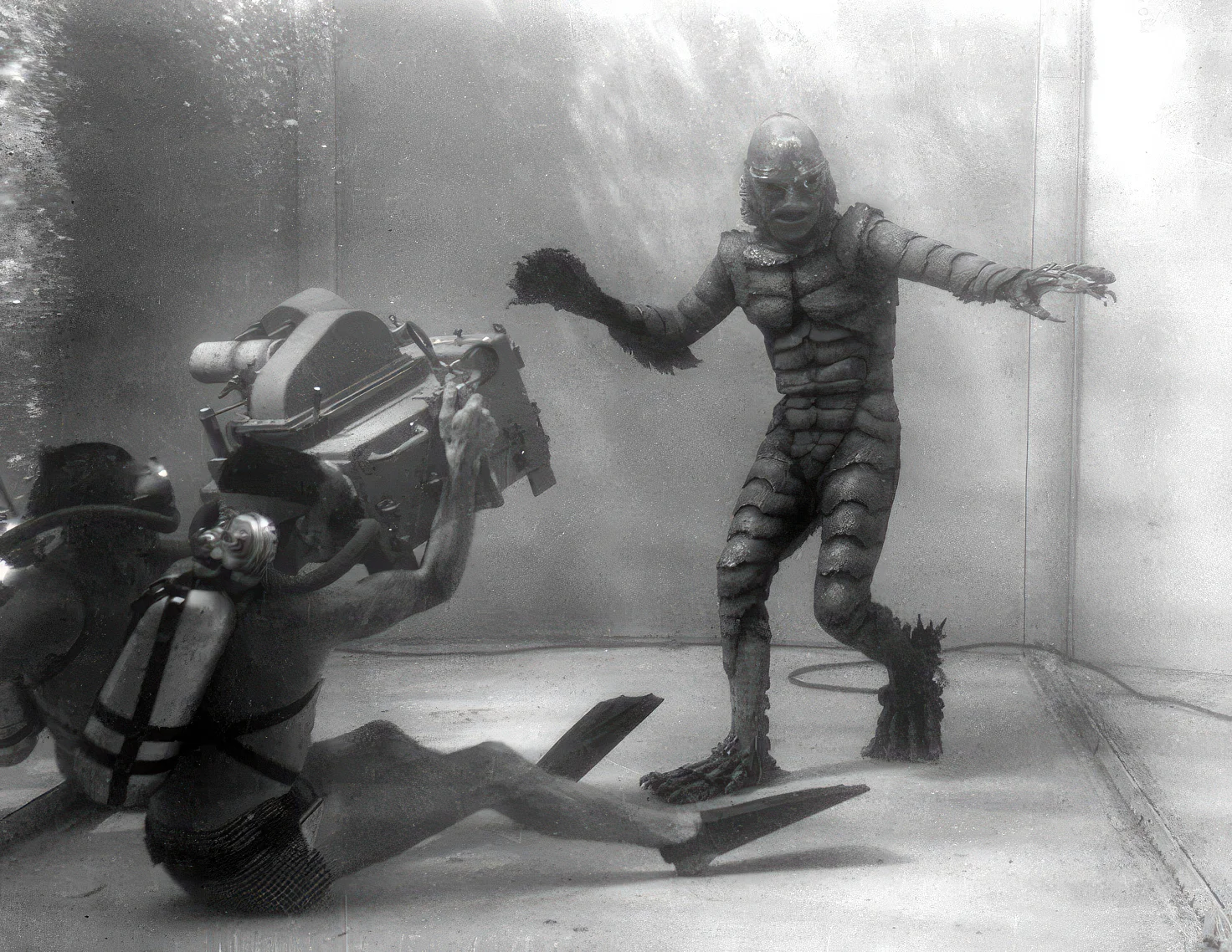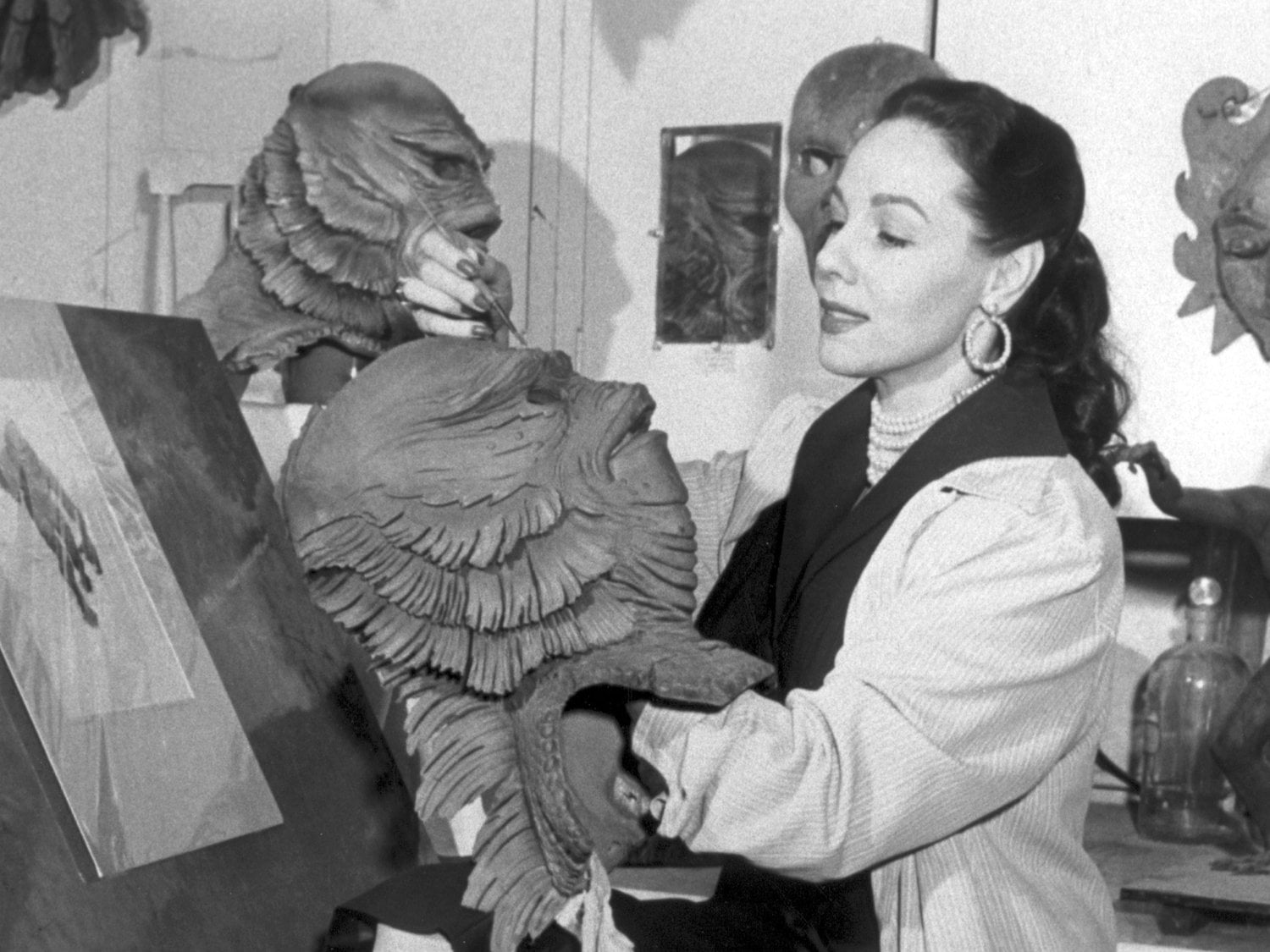Plunging into the shadowy waters of cinematic history, Creature from the Black Lagoon (1954) emerges not just as a film but as a phenomenon that has captivated the imaginations of horror enthusiasts and film buffs alike for seven decades. Celebrating its 70-year legacy, this masterpiece has swum far beyond its origins, securing a revered spot in the heart of monster movie lore.
As we dive deeper, we’re embarking on a journey through time, revisiting the ingenious craft and visionary storytelling that have made the Gill-man a beloved icon of horror. This retrospective aims to unearth the secrets behind the movie’s creation, its groundbreaking achievements, and the enduring fascination it holds. Let’s submerge ourselves in the murky depths where the Creature lurks, to rediscover the magic that makes Creature from the Black Lagoon a timeless treasure of the horror genre.

Diving Into the Depths: The Origin Story
Creature from the Black Lagoon didn’t just spring fully formed from the depths; its inception was the result of a serendipitous confluence of myth, creativity, and cinematic ambition. The seed was planted in the early 1940s, when producer William Alland attended a dinner party hosted by Mexican cinematographer Gabriel Figueroa. There, Alland was captivated by tales of a fish-like man lurking in the Amazon River, a story steeped in local lore that would become the nucleus for one of Universal’s most enduring monsters.
From the get-go, the screenplay, initially dubbed “The Sea Monster,” underwent several iterations. The collaborative effort of Harry Essex, Arthur Ross, and visionary director Jack Arnold transformed a simple monster movie into a nuanced narrative that juxtaposed mankind’s scientific curiosity with the primal fear of the unknown. This evolution of the script laid the groundwork for a story that was as much an exploration of human nature as it was a showcase for the creature itself.

Behind the Scenes: Crafting the Lagoon
The making of Creature from the Black Lagoon was a testament to the ingenuity and determination of its production team. Central to the film’s allure was the Gill-man, a marvel of costume design and an embodiment of the era’s fascination with special effects. The creature’s suit was a pioneering effort by Milicent Patrick, though the credit was controversially attributed to Bud Westmore, Universal’s head of makeup. The design was groundbreaking, requiring the actor inside to perform under the constraints of heavy latex in the unforgiving underwater scenes.
Filming those underwater sequences introduced a new layer of complexity. James C. Havens, who spearheaded the underwater cinematography, had to navigate the challenges of shooting in the clear waters of Silver Springs, Florida. These scenes were pivotal, not just for their visual spectacle but for conveying the Gill-man’s domain and his connection to the natural world. The use of 3D technology further immersed audiences into the lagoon’s depths, an innovative approach that added a palpable tension and realism to the creature’s lurking presence.
The human cast, led by Richard Carlson as David Reed and Julie Adams as Kay Lawrence, offered a human counterpoint to the Gill-man’s otherworldly menace. Their performances underscored the film’s central themes of curiosity, intrusion, and the unforeseen consequences of tampering with nature. The dynamic between the crew of the Rita and the Gill-man was charged with an undercurrent of both fascination and fear, a testament to the actors’ abilities to convey complex emotions without the aid of modern CGI.
The dual portrayal of the Gill-man, by Ricou Browning for the underwater scenes and Ben Chapman for the land scenes, deserves special mention. This innovative approach allowed the film to maximize the creature’s impact, showcasing Browning’s skilled swimming to imbue the Gill-man with a graceful, almost otherworldly presence beneath the waves, while Chapman’s portrayal on land emphasized the creature’s raw, imposing physicality. This dichotomy added layers to the Gill-man, transforming him from a mere monster into a sympathetic figure, caught between worlds and misunderstood by both.
As we surface from the depths of Creature from the Black Lagoon‘s production, it’s clear that the film was a product of its time yet timeless in its appeal. The collaborative efforts behind the scenes, from the innovative costume design and pioneering cinematography to the emotive performances and insightful direction, coalesced into a cinematic experience that has captivated audiences for generations.






![NIGHT OF THE REAPER Still 1 [Podcast] NIGHT OF THE REAPER Interview with Director Brandon Christensen 11 NIGHT OF THE REAPER Still 1](https://nofspodcast.com/wp-content/uploads/2025/08/NIGHT-OF-THE-REAPER-Still-1-100x57.png)



